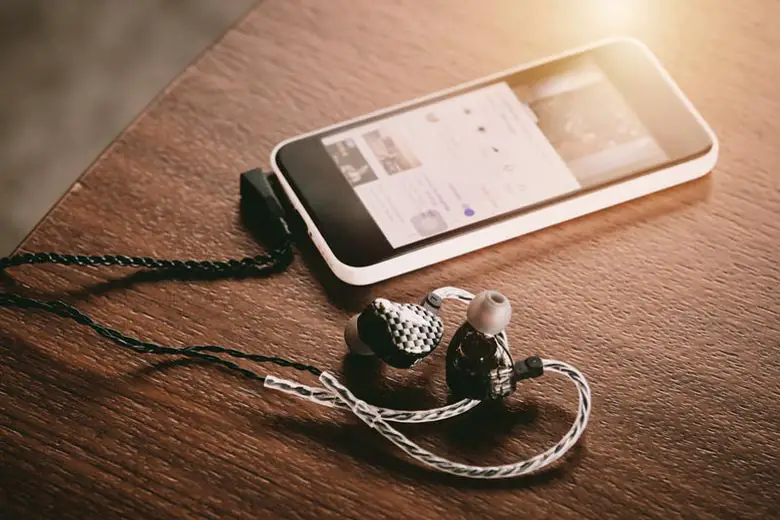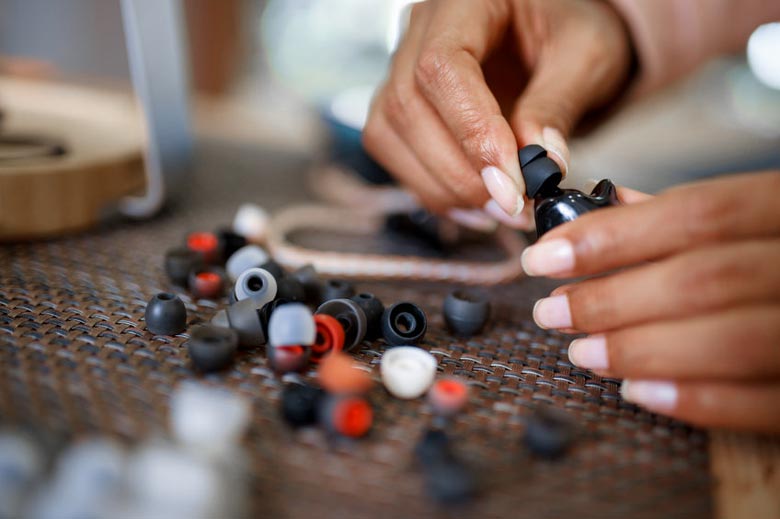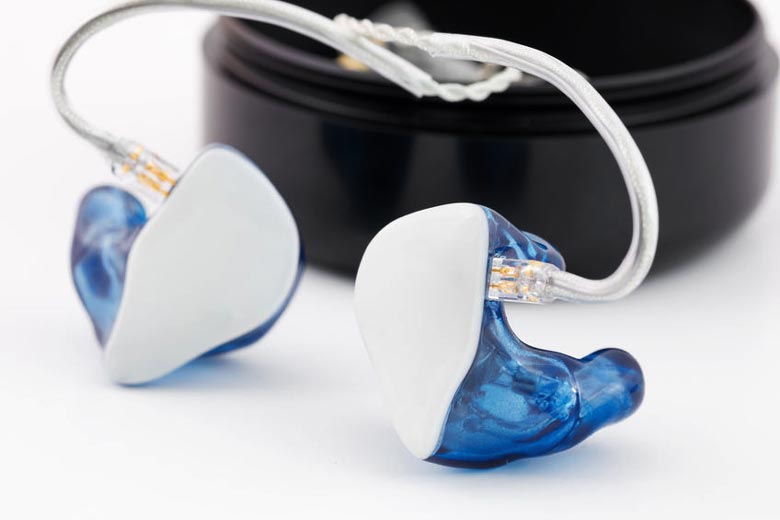One of the most overlooked aspects of buying earphones is sound isolation. This is especially true for those who have never used a pair of in-ear monitors (IEMs) before. Due to their design, they can isolate sound better than almost any other earpiece on the market.
IEMs leak sound because of poor seal from the ear tips. This issue will be evident when you turn up the volume, since you’ll be able to hear the sound leaking out. Make sure you use the right ear tips for your ears and replace them if they’re worn out or dirty.
This article will discuss 4 factors that cause IEMs to leak sound, how to know that your IEM is leaking sound, and how to fix it.

What Does It Mean for IEM To Leak Sound and How To Prevent It?
Leakage is the amount of sound that escapes from an IEM. This can be a concern when recording or performing live, as the leakage will mix with the music in the room and make it harder to hear clearly.
When IEMs leak sound, it means that sound is escaping and traveling to the external environment. This can be prevented by using the correct ear tips and keeping them clean.
In-ear monitors aren’t designed to be audible to anyone but the wearer. In other words, they don’t leak sound out of the earpiece so that others can hear what’s going on inside your head.
Many people choose to wear IEMs while listening to their favorite music because they prefer a more intimate listening experience than, for example, open back headphones, which allow ambient sounds into the ear cup and may leak sound out of the headphones themselves.
To prevent sound leakage from your IEM, here are 4 things you can do:
1. Identify the Causes of Sound Leakage
Leakage occurs when the sound from the earphones can escape and be heard by people around you. Leakage isn’t something that affects all earphones.
It’ll depend on several factors, including your earphone’s design, fit, and quality of your earphones.
Here some of the likely causes that contribute to IEM sound leak:
- The ear canal isn’t sealed well with the earplug. The tips of the IEMs should seal your ear canal not to let in air. If air gets in, sound leakage will occur. You can get this sealed by using a pair of foam tips or silicone tips for your IEMs.
- The earplug isn’t fit for your ears. If they don’t fit correctly, they won’t be comfortable, leading to sound leakage.
2. Avoid IEM Leak Sounds
IEMs are specifically designed to be inserted into your ear canal and provide isolation. Isolation is the degree to which a pair of earphones reduces the amount of noise that reaches your ear.
If you bought an IEM that’s supposed to provide isolation, but it doesn’t, here are some things that could be wrong with it:
Seal Problems
The first thing you need to do if your IEM leaks sound is to ensure that you have a proper seal in your ear.
The fit is vital for any in-ear monitor, and if you don’t have a good seal, it’s going to leak sound or isolate.
If your IEM has multiple tips, try different ones until you find one that fits comfortably and provides the best seal. This should help you avoid any leakage.

If that still doesn’t help, there’s likely a problem with the actual earphones. Try cleaning the tips and take them off those earphones, so they’re not dirty or greasy. Dirty ear tips often cause problems with IEMs, so maintaining a cleaning schedule would be useful to avoid this issue.
Also Read: How To Clean an IEM Nozzle (Complete Guide)
Foam Tips
Foam tips are great because they block out all the air around the IEM and make it virtually impossible for any sound to leak out of them.
Roll them up between your fingertips before inserting them if you use foam tips.
Isolation Issues
If you feel like the seal is perfect, but your IEM still leaks sound or doesn’t isolate properly, you might have an issue with materials or poor design. For example, if you have silicone tips, silicone tends to be more porous than foam.
The second way is through using an isolation cup. Isolation cups block out external noises and prevent leakage from happening at all.
They work by isolating the IEM from the rest of the world, making it impossible for any outside noise to enter your ear canal. This means that no matter what kind of music you listen to, nobody else will be able to hear it.
Tip: Make sure the IEMs are inserted as far into your ears as possible without causing discomfort.
3. Test for Sound Leakage
One of the best ways of testing if there’s no leakage from your IEMs is to use a friend to test it out. Wear your IEM, have them listen while you use it, and they’ll let you know if they can hear any sound leakage. However, If you want to test them yourself, use your device’s microphone.
Here’s how to use your device’s microphone:
- All you need to do is put on your earpiece and start playing any song at a comfortable volume level.
- You can then use your phone’s voice record feature to see how much sound leaks out and reaches the microphone.
If there’s none at all, that means there’s no leakage happening; if there’s some but not too much, then it’s probably ok; if there’s lots of noise coming through even when nothing is playing, then you should probably look into getting new ones.
Tip: Be sure to record in a quiet area.
4. Choose the Right IEM
Isolation
Isolation is a crucial factor to consider when purchasing your next pair of IEMs. The amount of isolation that a pair of IEMs offers can determine how much sound you’ll hear from outside sources and vice versa.
Another thing to consider is what type of earpieces you prefer. There are two main types, these are:
- Universal fit. Universal fit earphones typically have foam or silicone sleeves that compress to fill your ear canal. Some people prefer foam because it provides a better seal and blocks more outside noise, but others find foam uncomfortable after long listening sessions. Some people also like silicone sleeves because they’re reusable.
- Custom fit. Custom in-ear monitors are made from molds of your ears, so they provide a perfect fit every time, but they cost a lot more than universals (the price for a pair can go up to several thousand dollars). They also take about two weeks to be made, so universals are the way to go if you don’t want to wait for that long.

Fit and Comfort
Fit and comfort may sound minor, but it’s essential for long listening sessions. If you can’t wear them for 2-3 hours without getting ear fatigue or discomfort, they aren’t suitable for you even if they sound amazing.
Not only that, but isolation also plays a significant factor here since a seal is required to achieve the entire sound stage of your IEMs.
Final Thoughts
IEMs are a great, discreet way of listening to music or audio without irritating people around you. When you know that you’ll be using your earpiece in a public place, checking that your accessory is sealed using proper noise isolation tips will give you a pleasurable listening experience.
